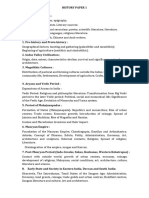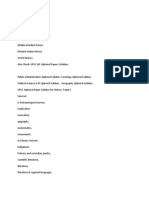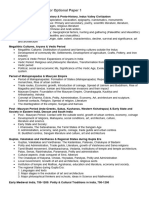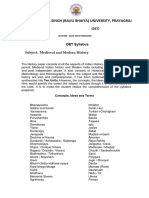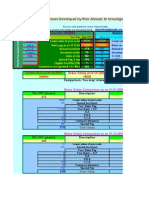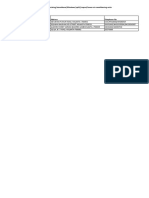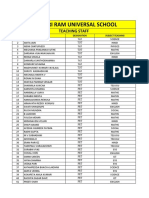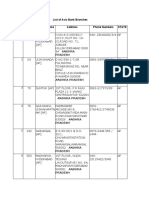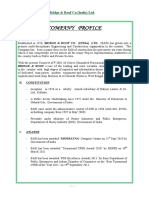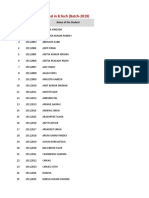0% found this document useful (0 votes)
232 views9 pagesUPSC - Mains Syllabus
The document provides an overview of the syllabus for the History paper of the UPSC Mains exam. It covers 24 topics related to Indian history from pre-history to the late 18th century, including the Indus Valley civilization, Vedic period, Mauryan empire, medieval regional kingdoms, Delhi Sultanate, Mughal empire and European trade/colonization. It also includes a separate section for Paper II focusing on European penetration into India and British expansion in the subcontinent.
Uploaded by
pratyoCopyright
© Attribution Non-Commercial (BY-NC)
We take content rights seriously. If you suspect this is your content, claim it here.
Available Formats
Download as PDF, TXT or read online on Scribd
0% found this document useful (0 votes)
232 views9 pagesUPSC - Mains Syllabus
The document provides an overview of the syllabus for the History paper of the UPSC Mains exam. It covers 24 topics related to Indian history from pre-history to the late 18th century, including the Indus Valley civilization, Vedic period, Mauryan empire, medieval regional kingdoms, Delhi Sultanate, Mughal empire and European trade/colonization. It also includes a separate section for Paper II focusing on European penetration into India and British expansion in the subcontinent.
Uploaded by
pratyoCopyright
© Attribution Non-Commercial (BY-NC)
We take content rights seriously. If you suspect this is your content, claim it here.
Available Formats
Download as PDF, TXT or read online on Scribd
/ 9



